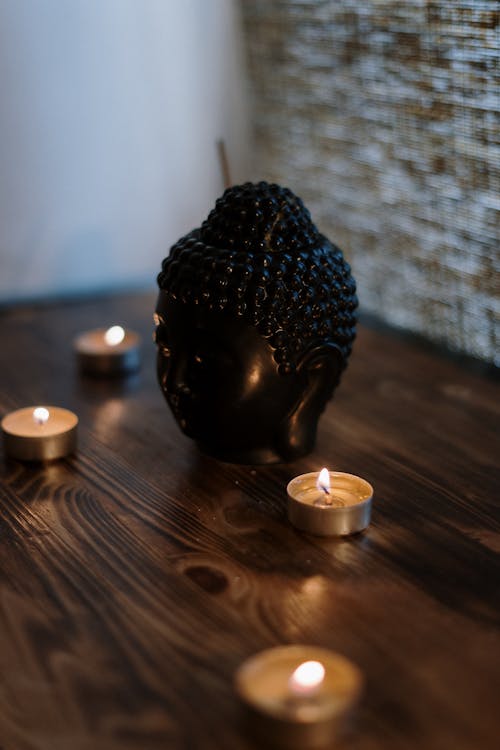Table of Contents
- What Exactly IS a Night Terror? More Than Just a Bad Dream
- Night Terrors vs. Nightmares: Knowing the Difference is Key
- During a Night Terror: Your Calm amidst Their Storm
- After the Storm Passes: The Quiet Aftermath
- Comforting Techniques & Proactive Prevention Strategies
- 1. Master the Bedtime Routine: Consistency is Your Superpower
- 2. Prioritize Sufficient Sleep: Banish Overtiredness
- 3. Create a Sleep Sanctuary: The Bedroom Environment Matters
- 4. Manage Daytime Stress and Anxiety
- 5. Consider Anticipatory Awakening (With Caution and Professional Guidance)
- 6. Safety First: Preparing for Potential Movement
- 7. Look at Diet and Hydration (Before Bed)
- When Night Terrors Warrant a Doctor’s Visit
- Taking Care of YOU: The Parent’s Survival Guide
- Conclusion: Riding the Wave with Patience and Comfort
That Bloodcurdling Scream: A Parent’s Guide to Raising Children with Night Terrors & Comforting Techniques
It’s the dead of night. You’re jolted awake by a sound that chills you to the bone – a piercing scream coming from your child’s room. You rush in, heart pounding, expecting to find them awake and terrified from a nightmare. But what you see is even more confusing and frightening: your child is sitting bolt upright, eyes wide open but unseeing, screaming, thrashing, perhaps even trying to get out of bed, completely unresponsive to your presence. They seem utterly terrified, yet completely unreachable. Then, almost as suddenly as it began, it stops. They might lie back down and fall asleep, leaving you shaken, confused, and wondering what on earth just happened. If this scene sounds familiar, your child likely experienced a night terror, also known as a sleep terror. It’s a deeply unsettling event for any parent, but take a deep breath – you’re not alone, and there are ways to navigate this. Let’s explore what night terrors are and uncover effective, comforting techniques to help your child (and you) get through them.
What Exactly IS a Night Terror? More Than Just a Bad Dream
Night terrors are not simply intense nightmares. They belong to a category of sleep disorders called parasomnias – undesirable events that occur during sleep or the transitions between sleep stages. Specifically, night terrors erupt during non-rapid eye movement (NREM) sleep, typically in the deepest stage (Stage N3), usually within the first two to three hours after falling asleep. This is different from nightmares, which occur during the lighter, dream-filled rapid eye movement (REM) sleep later in the night or early morning.
During a night terror, a part of the brain responsible for deep sleep arousal goes into overdrive, triggering a sudden, partial awakening characterized by an intense fight-or-flight response. However, the part of the brain responsible for consciousness, awareness, and memory remains largely asleep. This explains the perplexing combination of extreme panic and unresponsiveness.
Key Characteristics of a Night Terror Episode:
Recognizing the signs is the first step to understanding and managing these episodes:
- Sudden Onset: Often begins with a scream or gasp, seemingly out of nowhere.
- Timing: Typically occurs in the first third of the night, during deep NREM sleep.
- Intense Fear & Agitation: Child appears terrified, may scream, cry, thrash, kick, or bolt upright in bed.
- Physical Signs: Sweating, rapid breathing (tachypnea), racing heart (tachycardia), dilated pupils, muscle tension are common.
- Unresponsiveness: Eyes may be wide open, but the child is not truly awake or aware of their surroundings. They won’t recognize you or respond to attempts to comfort or soothe them.
- Inconsolability: Trying to hold or comfort them might even increase agitation, as they don’t perceive it as help.
- Difficulty Waking: Unlike a nightmare, it’s very hard to wake a child during a night terror, and it’s generally not recommended (more on this later).
- Potential Sleepwalking: Sometimes, a child might get out of bed and move around, increasing safety concerns.
- Abrupt End & Amnesia: The episode usually ends suddenly after a few minutes (though can occasionally last up to 30-40 minutes). The child often lies down and falls back into deep sleep quickly, sometimes without ever fully waking up. Crucially, they will have no memory of the event the next morning.
Why Do Night Terrors Happen? Unraveling the Mystery
While the exact cause isn’t fully understood, night terrors are thought to be related to the immaturity of the central nervous system and the way the brain manages transitions between deep sleep stages. They are most common in children between the ages of 3 and 7, often decreasing and disappearing by adolescence as the nervous system matures. However, they can occur in younger toddlers and sometimes persist into older childhood or even adulthood (though much less frequently).
Several factors can increase the likelihood of night terrors or trigger episodes:
- Sleep Deprivation/Overtiredness: This is perhaps the single biggest and most common trigger. When a child is overly tired, they spend more time in deep NREM sleep, increasing the window of opportunity for a terror to occur during sleep stage transitions.
- Immature Central Nervous System: The developing brain is still learning to regulate sleep cycles smoothly.
- Stress and Anxiety: Emotional stress (starting school, family conflict, moving house, excitement over a holiday) can disrupt sleep patterns and trigger episodes.
- Fever or Illness: Being sick can disrupt sleep architecture and make night terrors more likely.
- Changes in Sleep Schedule: Inconsistent bedtimes, travel, or disruptions to the usual routine can throw off the internal clock.
- New Sleep Environment: Sleeping in an unfamiliar place can sometimes be a trigger.
- Full Bladder: The need to urinate can cause a partial arousal from deep sleep that might trigger an episode.
- Certain Medications: Some medications can interfere with sleep stages.
- Underlying Sleep Disorders: Less commonly, conditions like obstructive sleep apnea or restless legs syndrome can disrupt sleep and contribute to night terrors.
- Genetics: There’s often a family history. If a parent experienced night terrors or sleepwalking, their child has a higher chance of experiencing them too.
Night Terrors vs. Nightmares: Knowing the Difference is Key
Confusing night terrors with nightmares is common, but understanding the differences is crucial because the appropriate parental response varies significantly. Misinterpreting a night terror as a nightmare might lead you to try interventions (like waking the child) that are unhelpful or even counterproductive.
The Showdown: Night Terror vs. Nightmare
- Timing in Sleep Cycle:
– Night Terrors: First 1-3 hours of sleep (Deep NREM Stage N3).
– Nightmares: Latter half of the night/early morning (REM Sleep). - Child’s State During Event:
– Night Terrors: Appears partially awake but is unresponsive, unaware of surroundings, inconsolable, difficult to wake.
– Nightmares: Wakes up fully, is aware, frightened by the dream content, seeks and responds to comfort. - Physical Signs:
– Night Terrors: Intense physical activity (screaming, thrashing, sitting up, sometimes sleepwalking), sweating, rapid heart rate/breathing.
– Nightmares: Usually remains lying down, may cry or call out, physiological signs (heart rate) less intense unless very scared upon waking. - Memory of Event:
– Night Terrors: No memory the next morning.
– Nightmares: Can usually recall details of the scary dream. - Return to Sleep:
– Night Terrors: Falls back asleep quickly after the episode ends, often without fully waking.
– Nightmares: May be afraid to go back to sleep, needs reassurance. - Comforting Response:
– Night Terrors: Focus on safety, minimal intervention, DO NOT WAKE.
– Nightmares: Provide comfort, reassurance, cuddles; okay to discuss the dream briefly if it helps.

Understanding this distinction empowers you to react appropriately, minimizing distress for both your child and yourself.
During a Night Terror: Your Calm amidst Their Storm
Witnessing a night terror is inherently stressful. Your instinct might be to wake your child, hug them tightly, or ask what’s wrong. However, during the episode itself, the best approach focuses on safety and minimal intervention.
What TO Do:
- Stay Calm: This is paramount, though difficult. Your child is not truly awake or aware of your fear. Your calm presence is for safety monitoring. Take deep breaths yourself.
- Ensure Safety: Silently observe and gently guide your child away from potential harm. If they are thrashing near the headboard, gently move them. If they get out of bed (sleepwalking), calmly steer them away from stairs, windows, or furniture with sharp corners. Use as little physical contact as necessary.
- Do NOT Try to Wake Them Forcefully: This is the most important ‘don’t’. Because they are stuck between sleep stages, forcibly waking them can increase their confusion, agitation, and fear. They won’t recognize you immediately and might lash out physically or become even more distressed. The episode may also last longer if you interfere.
- Speak Calmly and Minimally (Optional): Soft, reassuring murmurs like “You’re safe,” or “It’s okay,” *might* sometimes have a slight calming effect, but often they have no impact or can even increase agitation. Gauge your child’s reaction – if speaking seems to make it worse, remain silent. Don’t engage in conversation or ask questions.
- Ride It Out Patiently: Most night terrors last only a few minutes. Stay nearby, ensure they are safe, and wait for the episode to pass naturally. Remind yourself that they are not in conscious distress and won’t remember it.
What NOT to Do:
- Don’t Shake or Shout: This will likely intensify their agitation and fear upon potential partial waking.
- Don’t Forcefully Restrain Them: Unless there is immediate danger of injury, avoid holding them down. This can make them panic more and potentially cause accidental injury. Gentle guidance is better.
- Don’t Try to Reason or Ask Questions: They are not capable of logical thought or communication during the episode.
- Don’t Show Your Own Alarm: While you might feel panicked inside, try to maintain a calm exterior.
- Don’t Discuss the Episode During the Event: Save any discussion (if needed at all) for the daytime, and only if they bring it up or if you’re discussing prevention strategies generally.
After the Storm Passes: The Quiet Aftermath
Once the intense part of the night terror subsides, the transition back to sleep is usually swift.
- Gentle Settling: If they are out of bed or agitatedly sitting up, gently guide them back to lie down.
- Tuck Them In: Quietly make sure they are comfortable.
- No Need for Discussion: Resist the urge to talk about what just happened. They have no memory of the event, so discussing it can be confusing or create unnecessary anxiety about sleep. If they wake briefly and seem confused, offer simple reassurance like “Everything’s okay, time to sleep.”
- Quiet Departure: Once they seem settled back into sleep, you can leave the room. Check on them periodically if it helps ease your own anxiety.

Comforting Techniques & Proactive Prevention Strategies
While you can’t ‘comfort’ a child *during* a night terror in the traditional sense (since they aren’t aware), you can implement strategies to reduce the frequency and likelihood of these episodes occurring. Prevention is truly the most effective form of comfort when it comes to dealing with night terrors. Here’s a deep dive into actionable steps:
1. Master the Bedtime Routine: Consistency is Your Superpower
A predictable, calming bedtime routine is fundamental for healthy sleep hygiene for kids and can significantly reduce night terror frequency. It helps regulate the body’s internal clock (circadian rhythm) and signals that it’s time to wind down, promoting smoother transitions into sleep.
- Consistent Timing: Aim for the same bedtime and wake-up time every day, even on weekends, as much as possible. This consistency stabilizes sleep patterns.
- Wind-Down Period: Start the routine 30-60 minutes before lights out. This period should be screen-free and relaxing.
- Calming Activities: Choose activities that promote relaxation:
- A warm (not hot) bath with calming scents like lavender (if your child enjoys it).
- Putting on pajamas.
- Brushing teeth.
- Reading calming stories together (avoiding scary or overly stimulating ones).
- Listening to soft, quiet music or an audiobook.
- Gentle stretching or quiet Hatha yoga poses.
- A brief, loving chat about the positive parts of the day (avoiding stressful topics).
- A gentle back rub or massage.
- Dim Lighting: Lower the lights in the house during the wind-down routine to encourage melatonin production, the hormone that regulates sleep.
- No Screens Before Bed: This is critical. The blue light emitted from TVs, tablets, phones, and computers suppresses melatonin production, making it harder to fall asleep and potentially disrupting sleep architecture. Enforce a ‘no screens’ rule for at least 1-2 hours before bedtime.
2. Prioritize Sufficient Sleep: Banish Overtiredness
As mentioned, sleep deprivation is a major trigger for night terrors. Ensuring your child gets enough restorative sleep for their age is arguably the most impactful preventive measure.
- Know Age-Appropriate Sleep Needs: These are general guidelines; some kids need slightly more or less:
- Toddlers (1-2 years): 11-14 hours total sleep (including naps).
- Preschoolers (3-5 years): 10-13 hours total sleep (naps may become shorter or stop).
- School-aged Children (6-13 years): 9-11 hours total sleep.
- Protect Naptime (if applicable): If your child still naps, ensure they get adequate daytime rest. However, avoid naps that are too long or too late in the day, as this can interfere with nighttime sleep onset and quality. Finding the right nap balance is key to preventing overtiredness without sabotaging night sleep.
- Early Bedtime: Don’t hesitate to implement an earlier bedtime if your child seems consistently tired or if their schedule has been disrupted. Catching up on sleep is crucial.
3. Create a Sleep Sanctuary: The Bedroom Environment Matters
An environment conducive to uninterrupted sleep can help prevent the partial arousals that might trigger night terrors.
- Darkness: Make the room as dark as possible. Use blackout curtains to block outside light. Cover or remove any electronics that emit light.
- Quiet: Minimize noise from within and outside the house. A white noise machine or a fan can create a consistent, soothing soundscape that masks disruptive noises.
- Cool Temperature: A bedroom that’s too warm can interfere with sleep. Aim for a cool, comfortable temperature, generally between 65-70°F (18-21°C).
- Comfort and Safety: Ensure the mattress, pillows, and bedding are comfortable. Pajamas should be appropriate for the temperature. The bed itself should feel like a safe, inviting space.
- Night Light Considerations: If darkness frightens your child, use a very dim, warm-toned (red or orange) night light. Avoid bright white or blue lights, which are more disruptive to melatonin. Position it so it doesn’t shine directly in their eyes.

4. Manage Daytime Stress and Anxiety
Unresolved worries or anxieties can bubble up during sleep. Helping your child process feelings during the day can lead to more peaceful nights.
- Dedicated Talk Time: Create a regular time (well before bed) for your child to talk about their day, their worries, or anything on their mind. Listen actively and validate their feelings without judgment.
- Worry Journal or Box: For older children, encourage writing down worries or drawing pictures of them and putting them in a special ‘worry box’ to deal with tomorrow.
- Problem-Solving Together: If specific anxieties arise (e.g., about school, friends), brainstorm potential solutions together during the day. Feeling empowered can reduce anxiety.
- Teach Relaxation Skills: Simple techniques like deep ‘belly breaths’, progressive muscle relaxation (tensing and releasing muscles), or guided imagery can be practiced during the day and potentially used if they feel anxious.
- Maintain Routines During Stressful Times: During periods of change or stress (new sibling, move, etc.), try to keep other routines, especially the bedtime routine, as consistent as possible to provide a sense of security.
5. Consider Anticipatory Awakening (With Caution and Professional Guidance)
This technique involves preemptively, gently rousing the child just before their usual night terror time. The idea is to disrupt the deep sleep cycle slightly, preventing the transition that triggers the terror. However, this should only be attempted after discussion with your pediatrician or a sleep specialist.
- Track the Pattern: Keep a sleep diary for a week or two, noting the exact time the night terrors occur each night. They often happen around the same time.
- Implement Gentle Waking: If a consistent pattern emerges, plan to gently wake your child about 15-30 minutes *before* the anticipated event. ‘Waking’ doesn’t mean fully awake – just enough to stir them slightly, perhaps by smoothing their hair, whispering their name, or gently adjusting their position. They should ideally settle back to sleep quickly without becoming fully conscious.
- Consistency is Key: If you try this method, you’ll likely need to do it consistently for several nights or even a couple of weeks.
- Why Consult a Pro? A doctor can help determine if this is appropriate for your child, advise on the best method and timing, and ensure it doesn’t inadvertently worsen sleep fragmentation. It doesn’t work for all children.
6. Safety First: Preparing for Potential Movement
Given the possibility of thrashing or sleepwalking during an episode, proactively safety-proofing the sleep environment is essential.
- Clear the Area: Remove toys, books, clothes piles, and loose rugs from the floor around the bed.
- Secure Furniture: Ensure bookshelves, dressers, or other heavy furniture items are stable and secured to the wall if necessary.
- Bed Placement & Protection: Position the bed away from windows or sharp corners. For younger children or those prone to falling out of bed during episodes, consider using bed rails or placing the mattress on the floor. Avoid bunk beds if your child experiences night terrors.
- Stair Safety: If sleepwalking occurs and you have stairs, ensure safety gates are installed at the top (and potentially bottom) and are used consistently every night.
- Lock Doors and Windows: Ensure exterior doors and windows are securely locked to prevent accidental wandering outside. Consider adding alarms or bells to doors if sleepwalking is a significant concern.
7. Look at Diet and Hydration (Before Bed)
While less common triggers than overtiredness or stress, pre-bed intake can sometimes play a role.
- Avoid Heavy Meals & Sugary Snacks: A large meal right before bed can cause discomfort or indigestion that might disrupt sleep. Sugary snacks can be overly stimulating. Aim to finish dinner at least 2 hours before bedtime. A small, light, healthy snack (like a banana or a small glass of milk) is usually fine if needed.
- Manage Fluid Intake: Encourage plenty of fluids throughout the day, but taper off intake in the 1-2 hours before bed to reduce the likelihood of a full bladder causing an arousal from deep sleep. Ensure one last trip to the bathroom is part of the bedtime routine.
- Check for Hidden Caffeine: Be mindful of caffeine sources beyond coffee, such as sodas (cola), iced tea, chocolate (especially dark), and some energy drinks or supplements, particularly later in the day.
When Night Terrors Warrant a Doctor’s Visit
While most cases of children’s night terrors are benign and resolve over time, it’s important to consult your pediatrician or a pediatric sleep specialist under certain circumstances:
- High Frequency/Persistence: The terrors happen very often (e.g., nightly or multiple times a week) and continue for many weeks or months.
- Long Duration: Episodes consistently last longer than 30 minutes.
- Safety Concerns: The child engages in dangerous behavior during episodes, leading to injuries or near-injuries (e.g., aggressive movements, attempting to leave the house).
- Atypical Timing: The episodes frequently occur in the second half of the night (more typical of nightmares) or happen regularly during naps.
- Significant Daytime Symptoms: The child experiences excessive daytime sleepiness, difficulty concentrating, behavioral problems, morning headaches, or learning difficulties that could suggest severely disrupted sleep quality.
- Suspicious Movements or Symptoms: There are unusual movements during the episode (e.g., rhythmic jerking), excessive drooling, or urinary incontinence, which might raise concern for other conditions like nocturnal seizures (epilepsy).
- Signs of Breathing Issues: You observe loud, habitual snoring, pauses in breathing (apnea), gasping, or mouth breathing during sleep, suggesting potential obstructive sleep apnea, which can fragment sleep and trigger parasomnias.
- Post-Medication Onset: The night terrors began shortly after starting a new medication.
- Major Family Disruption: The episodes are causing significant anxiety, sleep deprivation, and stress for the entire family.
A healthcare professional can perform a thorough evaluation, rule out underlying medical conditions, provide tailored advice on comforting techniques and prevention, and refer you to specialized care (like a sleep study or neurologist) if necessary.

Taking Care of YOU: The Parent’s Survival Guide
Let’s be honest: regularly witnessing your child experience night terrors is incredibly stressful and exhausting. The sheer panic in their (unseeing) eyes, the screaming, the feeling of helplessness – it takes a toll. It’s crucial to acknowledge your own needs and well-being.
- Validate Your Feelings: It’s okay to feel scared, frustrated, anxious, or tired. These are normal reactions.
- Remember It’s Not Your Fault: Night terrors are a developmental or physiological occurrence, not a result of bad parenting. You are doing your best in a challenging situation.
- Know It’s Usually Temporary: Hold onto the fact that the vast majority of children outgrow sleep terrors naturally, typically by their teenage years.
- Educate Yourself & Your Partner: Understanding the ‘why’ and ‘what’ of night terrors can demystify them and reduce fear. Share reliable information with anyone else involved in your child’s care.
- Lean on Your Support System: Talk about your experiences with your partner, friends, family, or other parents who may have gone through something similar. Sharing the burden can make it feel lighter.
- Share Night Duty: If possible, take turns with your partner being ‘on call’ or responding to episodes so that neither of you becomes completely sleep-deprived.
- Prioritize Your Own Rest: Easier said than done, but try to protect your own sleep where possible. Go to bed earlier when you can, nap if possible, and practice good sleep hygiene yourself. Your resilience depends on your well-being.
- Seek Professional Support for Yourself: If the stress becomes overwhelming, consider talking to a therapist or counselor.
Conclusion: Riding the Wave with Patience and Comfort
Navigating the world of children’s night terrors can feel like weathering a recurring storm. The sudden intensity and your child’s apparent distress can be deeply unsettling. However, armed with knowledge and practical strategies, you can manage these episodes effectively and, more importantly, work towards reducing their frequency.
The cornerstones of managing and preventing night terrors lie in understanding the difference between terrors and nightmares, prioritizing safety and minimal intervention *during* an episode, and focusing proactively on prevention. This means championing a consistent, calming bedtime routine, ensuring your child gets adequate sufficient sleep to combat overtiredness, managing daytime stress, optimizing the sleep environment, and considering strategies like anticipatory awakening under professional guidance.
Remember to be patient – with your child and with yourself. Most children will outgrow this phase. In the meantime, provide a stable, loving, and secure environment. While they might be unreachable during the terror itself, your consistent care and the preventative measures you take are powerful forms of comfort. And never hesitate to seek professional help if the episodes are frequent, severe, or causing significant concern. With understanding, patience, and the right approach, you can help steer your family towards calmer, more peaceful nights.










